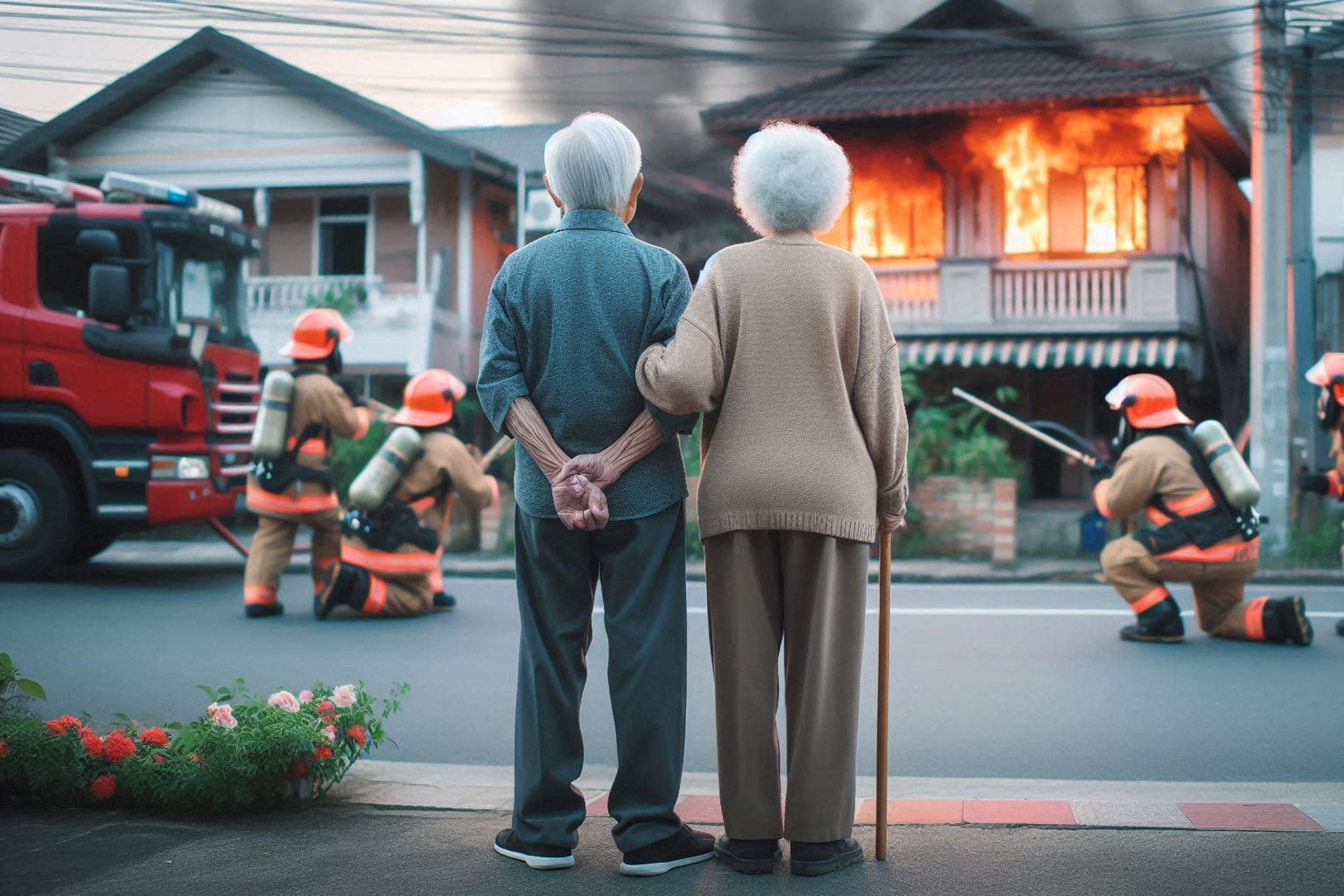
An estimated one in six Australians are impacted by hearing loss and it’s the older population among the most vulnerable to an unexpected danger: household fires.
Statistics reveal that over three-quarters of Australia’s population living with hearing loss are aged 60 and over. The prevalence of hearing loss increases to 80% for those aged 80 and over.
Although most would expect smoke alarms to be the first warning sign of danger when a fire begins, people who are deaf or hard of hearing are obviously more vulnerable as they cannot necessarily hear the alarm.
Hearing aids often provide minimal support, too, as research from Brooks Australia says over half of those who are hard of hearing don’t wear their hearing aids or cochlear implants while they sleep.
“When we sleep we don’t smell or see so we have this real issue around smoke alarms when you can hear them, they work great. But when you can’t, they’re not effective at all,” said Jackson Holt, Specification Manager at Brooks Australia.
“Most fires are happening while you’re asleep, which is a scary thought. If you were hard of hearing and you didn’t hear the smoke alarm you’re relying on someone else to wake you up and alert you to that fire.
“In the middle of the night when it’s pitch black, that is a really tough time to try and communicate what’s happening. It’s also crucial seconds you’re losing in terms of getting out of the house.”
Research backs up Mr Holt’s claims: house fires are most common between 8pm and 8am with the midnight-4am period the peak risk period.
Mr Holt added that a quarter of people said their biggest worry was their elderly relatives hearing a smoke alarm and actually being able to safely escape on their own.
With this issue in mind, he reinforced the importance of smoke alarms no matter what – especially as they are legally required to be in every home – but he said there are additional safeguards to consider.
“Smoke alarms are the first piece of the puzzle. We definitely want to have an audible alarm in every single house and it’s legislation. That alerts people around you that there is a fire event,” he said.
“There are also visual alert alarms that are a strobe light that can be linked in with a fire safety system. It has an LED light that will flash and is eyelid piercing making it a fit-for-purpose fire safety solution for those with a hearing impairment. You have it in your bedroom, lounge room or hallway; wherever you feel you might need it.”
“It’s as if somebody’s shining a torch in your eyes and when you wake up you know exactly what’s happening; you’re aware there’s a fire.”
He added that this is a perfect solution for homes in retirement communities or rooms in residential care homes as well.
As for maintenance, remember the number 10:
“Maintaining your smoke alarms and ensuring that your smoke alarms are working is a crucial step. But also ensuring you have the right smoke alarm or visual aid for your needs.”
In addition to a secure fire safety system, another key piece of the puzzle is a detailed fire safety plan.
“We find properties that don’t have a smoke alarm or a visual alarm device, you put yourself at risk or much higher risk of a fatality occurring up to about 60% more likely for a fatality to occur in the event of a fire. It’s not a small statistic,” Mr Holt added.
“Smoke alarms and these visual alarm devices, they’re not here to protect your property, they’re here to save your life. Getting out of the house is the the most crucial thing. Fire safety plans are crucial. We’re finding only one third of Australians actually have one in place.”
A detailed fire safety plan, alongside well-maintained smoke alarms, is therefore essential for people of all ages.